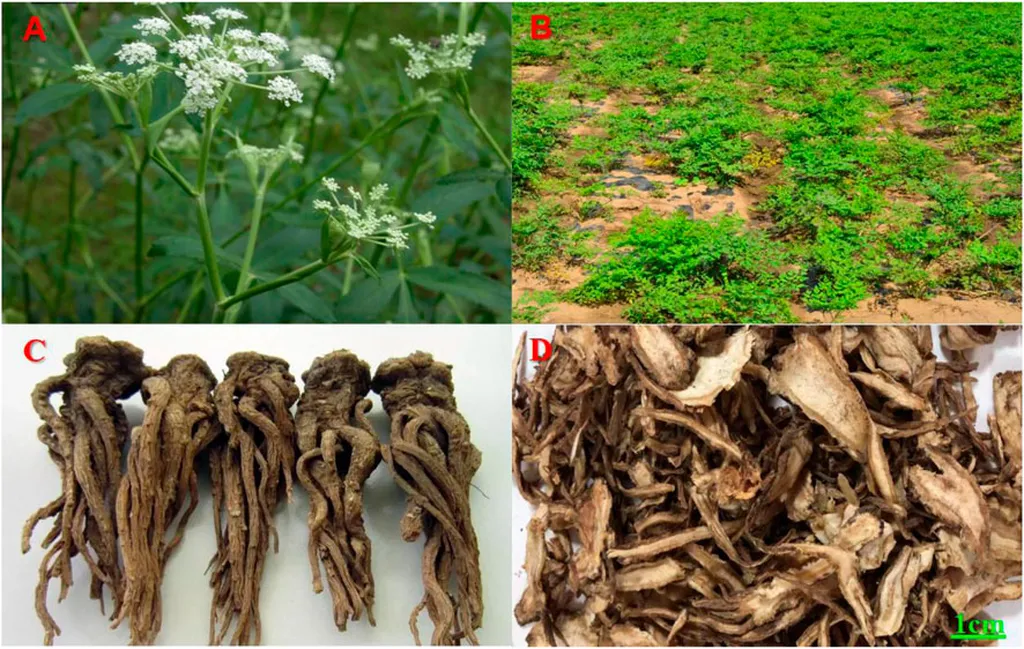In the heart of China, researchers have unlocked a genetic treasure trove that could revolutionize the cultivation of Angelica sinensis, a medicinal plant prized for its bioactive compounds. A study published in *Frontiers in Plant Science* has identified 148 bHLH transcription factors in A. sinensis, with four promising candidates linked to the biosynthesis of ferulic acid, a compound with significant medicinal value.
The basic helix-loop-helix (bHLH) proteins are known to regulate various aspects of plant growth, development, and stress responses, as well as the production of secondary metabolites. However, their role in A. sinensis, a plant renowned for its medicinal properties, has remained largely unexplored until now. The research team, led by Khadija Tehseen Arshad from the Key Laboratory of Medicinal Plant Biology of Yunnan Province, systematically identified and characterized these transcription factors through whole-genome analysis and transcriptome profiling.
The study revealed that these transcription factors encode hydrophilic proteins, with nearly all localized to the nucleus. Gene structure analysis showed a range of exon numbers, while MEME motif analysis identified five conserved motifs shared across most AsbHLH proteins. Promoter analysis uncovered abundant cis-elements associated with growth, secondary metabolism, and stress responses.
One of the most significant findings was the identification of four putative genes potentially associated with ferulic acid production. “These genes could be key to enhancing the medicinal value of A. sinensis,” said Arshad. “By understanding and manipulating these genetic pathways, we can potentially increase the production of ferulic acid, making the plant more valuable for medicinal use.”
The commercial implications for the agriculture sector are substantial. Angelica sinensis is already a valuable crop, but the ability to enhance its medicinal properties through genetic engineering could significantly boost its market value. This could lead to increased cultivation and higher yields, benefiting farmers and the agricultural industry as a whole.
The study also provides a comprehensive genomic and transcriptomic resource for AsbHLH genes in A. sinensis, highlighting their roles in secondary metabolism. This research could pave the way for future developments in the field, including the creation of genetically engineered crops with enhanced medicinal properties.
As the demand for natural and effective medicinal products continues to grow, the ability to enhance the medicinal value of crops like A. sinensis could be a game-changer. This research not only advances our understanding of the genetic mechanisms underlying secondary metabolism in plants but also opens up new possibilities for the agricultural and pharmaceutical industries.
In the words of Arshad, “This is just the beginning. The potential for genetic engineering in enhancing the medicinal value of crops is vast, and we are excited to explore the possibilities further.” With this groundbreaking research, the future of medicinal plant cultivation looks brighter than ever.

